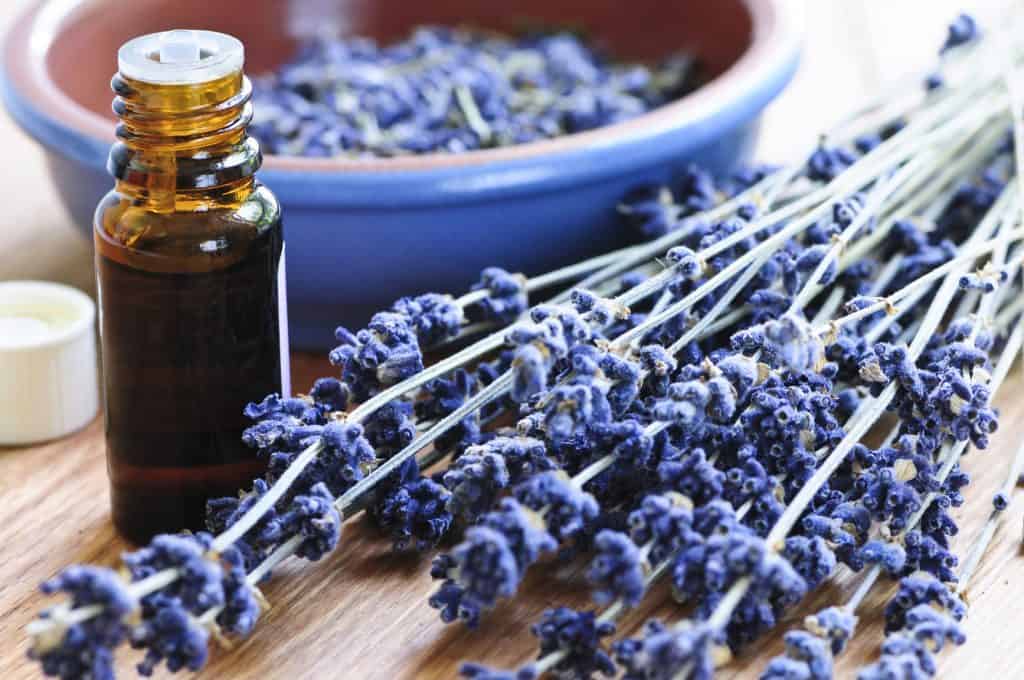

Getting through a painful period is a fact of life for a majority of menstruating women (and girls). For those with severe pain, taking an over-the-counter or prescribed medication may be an easy solution, but there are safer options. Especially because repeated use of pain relievers and oral contraceptives can have deleterious health effects, natural approaches are highly coveted. As documented in several respected studies, aromatherapy with massage can decrease the severity of dysmenorrhea – without any side effects.
About Dysmenorrhea and Its Prevalence
The medical term for pain with menstruation, dysmenorrhea can be primary or secondary.
- Primary Dysmenorrhea – This is common menstrual cramps that are not due to another health problem. Cramps typically begin one or two days before or after a woman begins her monthly menses. The pain is usually felt in the low abdomen, back or thighs and may be accompanied by nausea, vomiting, fatigue and diarrhea.
- Secondary Dysmenorrhea – Secondary dysmenorrhea is pain that is caused by a disorder in the reproductive organs, such as endometriosis, adenomyosis, uterine fibroids or infection. This type of dysmenorrhea usually begins earlier in the menstrual cycle and is longer lasting than menstrual cramps.
Initiated by a release of the hormone prostaglandin, primary dysmenorrhea is caused by contractions in the uterus.
- During menstruation, the uterus contracts strongly to help slough off its accumulated lining.
- With strong contractions, nearby blood vessels may be pressed against – temporarily cutting off the supply of oxygen to the uterine muscles.
- Pain results when part of the muscle briefly loses its supply of oxygen.
According to a large Italian study published in a 2012 edition of the Journal of Pain Research, dysmenorrhea is reported by more than 80 percent of menstruating women. In this study, the researchers found that at least one in four women experiences distressing menstrual pain characterized by a need for medication and absenteeism from study or social activities.
Pharmaceutical Dysmenorrhea Relief
From a Western medical perspective, dysmenorrhea is a treatable problem. Physicians typically recommend non-steroidal anti-inflammatory drugs or oral contraceptives:
- NSAIDs (non-steroidal anti-inflammatory drugs) – While over-the-counter or prescription NSAIDs (Advil, Motrin, Aleve, Ponstel) may relieve dysmenorrhea, they also have side effects. The most common problems associated with NSAID use occur in the gastrointestinal, renal and hepatic systems.
- Oral Contraceptives – Oral birth control pills contain hormones that prevent ovulation and reduce the severity of menstrual cramps. Besides pills, these hormones can also be delivered via injection, a skin patch, an implant placed under the skin or a flexible ring inserted into the vagina. Besides the increased risk of heart problems if combining cigarette smoking with oral contraceptives, regular exposure to the hormones in oral contraception can pose a wide range of potential health issues.
Aromatherapy
Besides taking medications, there are a handful of ways women can reduce the intensity of dysmenorrhea. Because the origin of most menstrual cramps is blood constriction of uterine muscles, strategies to enhance local circulation are effective. Since massage therapy’s primary physiological effect is increasing circulation, bodywork is often used to relieve menstrual cramps. However, massage therapists who practice aromatherapy have a more powerful tool for easing dysmenorrheal: essential oils.
- In a Korean study published in the July-August 2006 edition of the Journal of Complementary and Alternative Medicine, researchers concluded that aromatherapy using topically applied essential oils of lavender, clary sage and rose were effective in decreasing the severity (by more than 50 percent) of menstrual cramps.
- In an Egyptian study published online in April 2013 in Evidence-Based Complementary and Alternative Medicine, researchers found that compared with a placebo group, aromatherapy abdominal massage was effective in alleviating menstrual pain. More specifically, aromatherapy abdominal massage given once daily for seven days prior to menstruation using the essential oils cinnamon, clove, rose and lavender in a base of almond oil were significantly more effective in reducing dysmenorrhea (both pain level and duration) than a similar group receiving abdominal massage with just almond oil.
According to Valerie Cooksley, RN, an author, certified aromatherapist, and co-founder of the Institute of Integrative Aromatherapy, the oils used in the studies above are traditionally chosen for their anti-spasmodic, anti-inflammatory and analgesic properties. Regarding these oils, Cooksley explains, “They have been used effectively throughout the ages for easing menstrual pain and cramping.”
As long as they are used properly, abdominal massage with essential oils is a great option for relieving menstrual cramps. Although it takes more effort than popping a pill, aromatherapy applied with massage is far gentler on the body in the long term, is more enjoyable and does not have the side effects that may accompany NSAIDs or oral contraceptives.
Recommended Study:
Aromatherapy: An Introduction
Essential Oils & Therapeutic Uses











